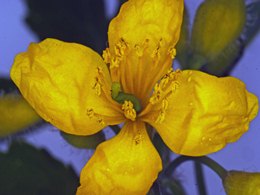History of Homeopathy – Down the Memory Lane
Dr Samuel Hahnemann, a German doctor is credited as being the founder of
homeopathy, a popular branch of alternative medicine. Western traditional
medical practices from the 16th to the early 20th centuries followed
ineffectual, harmful and sometimes even fatal forms of treatment like
bloodletting, purging and so on. Dr Hahnemann was deeply perturbed with these
forms of treatments and started to translate medical texts for a chemist
after having given up his medical practice.
It was during the course of his translations into German that he came across
a medical text named Materia Medica written by William Cullen. It was this
text which inspired Dr Samuel Hahnemann to begin his quest for an alternative
medical practice which was less harmful as also more beneficial to patients.
He thus based his new treatment practice on the Latin principle “Similia
Similibus Curentur” which means let likes cure likes.
Before Dr Samuel Hahnemann, Parascelsus a pharmacist had said in the 16th
century that small doses of any substance that make a person sick can also be
used to cure him. This later became the guiding principle of Homeopathy. It
was in the nineteenth century that Hahnemann coined the term ‘homeopathy’ to
denote his new form of treatment.
Dr Hahnemann considered the methods of treatment followed by traditional
western medical practitioners of those early times as being irrational and
dangerous even though these methods had been in vogue for centuries. He felt
that the use of a single drug or medicine at low doses would help to cure a
patient. He believed that any disease had both spiritual as well as a
physical cause and that an imbalance in this force would lead to illnesses.
Hahnemann also advised his patients to adopt a healthier and better lifestyle
as in the areas of diet, exercises and also following a routine of
cleanliness.

To dilute the substances used to prepare medicines, Hahnemann requested a saddle maker to prepare a special wooden striking board. This board was covered with leather on one side and stuffed with horse hair. The substance to prepare the medicine was diluted in water or alcohol and then shaken very vigorously by giving ten hard strikes against the wooden striking board. This process served to activate the vital force of the substance which while maintaining the therapeutic properties discarded the harmful effects of the substance.
By the early 19th century, Homeopathy gained in popularity. Dr John Franklin Gray was the first Homeopathic doctor in the USA. The first Homeopathic institutions had begun to come up all over Europe and the US. Soon Homeopathy was patronized by the royal families of Europe, entrepreneurs of USA, many religious leaders as well as popular literary figures. As Homeopathy grew in popularity as an effective alternative medical practice, it had its share of detractors as well.
The Food Drugs and Cosmetic Act 1938, recognized homeopathic medicines as drugs. Later in the mid 1970s Homeopathy was revived again and the research conducted by Dr George Vithoulkas further refined and updated Homeopathic practices.
